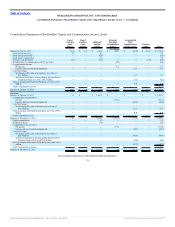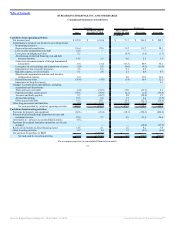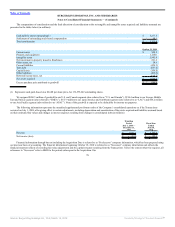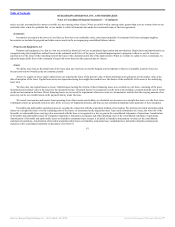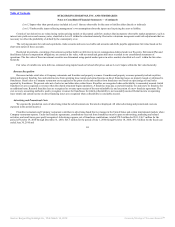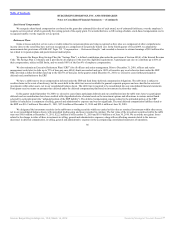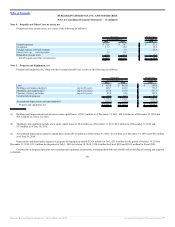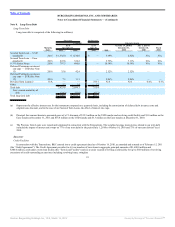Burger King 2011 Annual Report Download - page 84
Download and view the complete annual report
Please find page 84 of the 2011 Burger King annual report below. You can navigate through the pages in the report by either clicking on the pages listed below, or by using the keyword search tool below to find specific information within the annual report.
Table of Contents
BURGER KING HOLDINGS, INC. AND SUBSIDIARIES
Notes to Consolidated Financial Statements — (Continued)
comprised of geographic regions within those countries (three in the U.K. and two in Germany). These operating market definitions are based upon the following
primary factors:
• management views profitability of the restaurants within the operating markets as a whole, based on cash flows generated by a portfolio of restaurants,
rather than by individual restaurants, and area managers receive incentives on this basis; and
• we do not evaluate individual restaurants to build, acquire or close independent of an analysis of other restaurants in these operating markets.
In countries in which we have a smaller number of restaurants, most operating functions and advertising are performed at the country level, and shared by
all restaurants in the country. As a result, we have defined operating markets as the entire country in the case of Spain, Italy, Mexico, Singapore and China.
Other Comprehensive Income (Loss)
Other comprehensive income (loss) refers to revenues, expenses, gains and losses that are included in comprehensive income (loss), but are excluded from
net income (loss) as these amounts are recorded directly as an adjustment to stockholders’ equity, net of tax. Our other comprehensive income (loss) is comprised
of unrealized gains and losses on foreign currency translation adjustments, unrealized gains and losses on hedging activity, net of tax, and minimum pension
liability adjustments, net of tax.
Derivative Financial Instruments
Gains or losses resulting from changes in the fair value of derivatives are recognized in earnings or recorded in other comprehensive income (loss) and
recognized in the statements of operations when the hedged item affects earnings, depending on the purpose of the derivatives and whether they qualify for, and
we have applied hedge accounting treatment.
When applying hedge accounting, our policy is to designate, at a derivative’s inception, the specific assets, liabilities or future commitments being hedged,
and to assess the hedge’s effectiveness at inception and on an ongoing basis. We may elect not to designate the derivative as a hedging instrument where the
same financial impact is achieved in the financial statements. We do not enter into or hold derivatives for speculative purposes.
Disclosures About Fair Value of Financial Instruments
Certain assets and liabilities are not measured at fair value on an ongoing basis but are subject to fair value adjustment in certain circumstances. These
items primarily include long-lived assets, goodwill and intangible assets for which fair value is determined as part of the related impairment tests and asset
retirement obligations initially measured at fair value. At December 31, 2011, there were no significant adjustments to fair value or fair value measurements
required for non-financial assets or liabilities.
Fair value is defined as the price that would be received to sell an asset or paid to transfer a liability in an orderly transaction between market participants
in the principal market, or if none exists, the most advantageous market, for the specific asset or liability at the measurement date (the exit price). The fair value
should be based on assumptions that market participants would use when pricing the asset or liability. The fair values are assigned a level within the fair value
hierarchy, depending on the source of the inputs into the calculation, as follows:
Level 1 Observable inputs that reflect quoted prices (unadjusted) for identical assets or liabilities in active markets
83
Source: Burger King Holdings Inc, 10-K, March 14, 2012 Powered by Morningstar® Document Research℠



